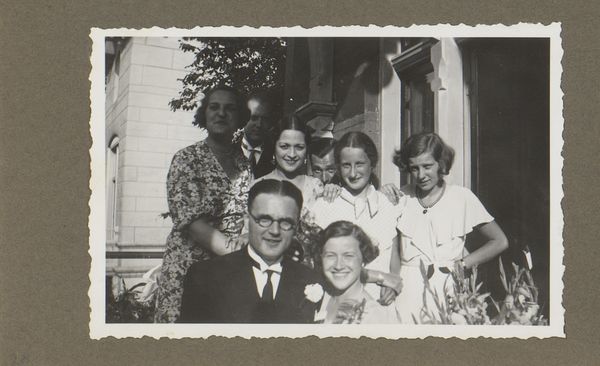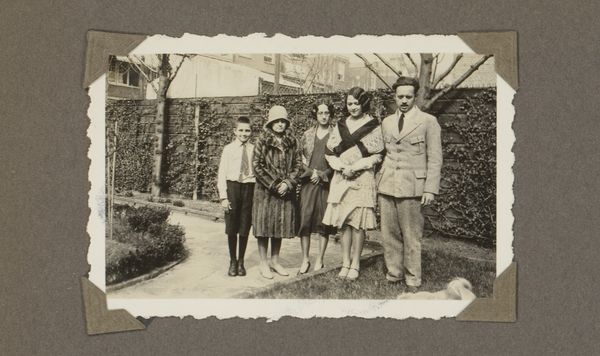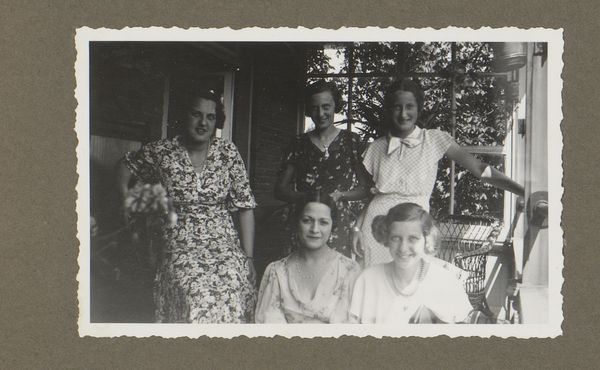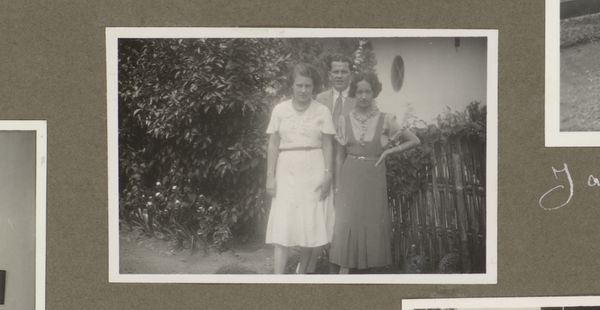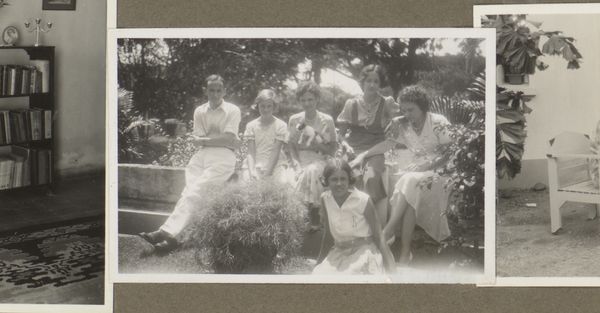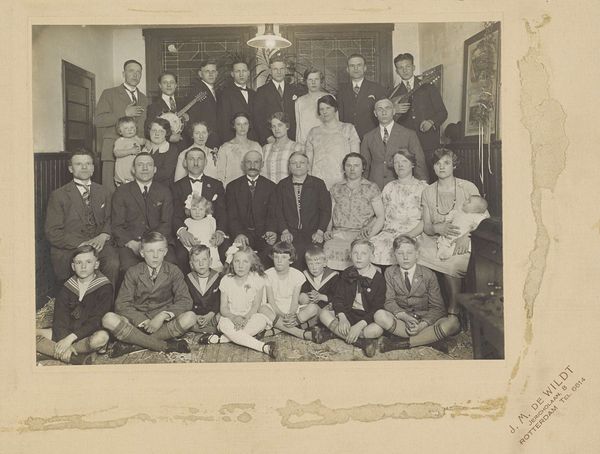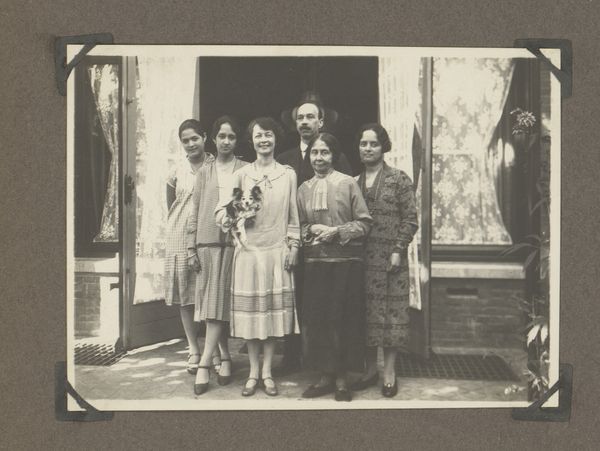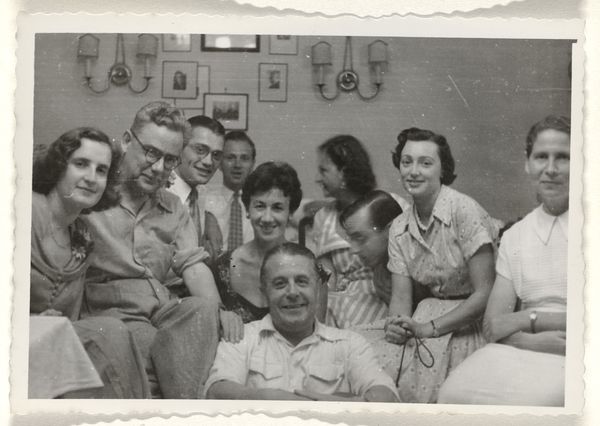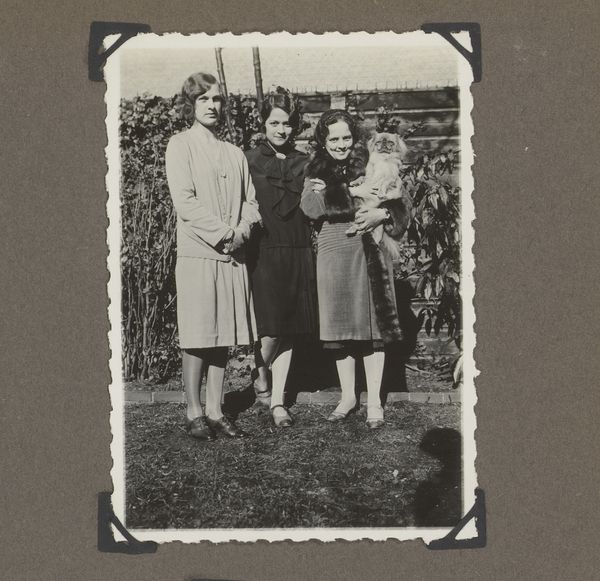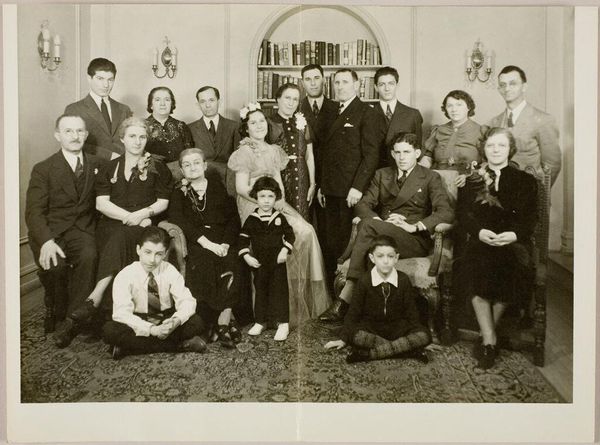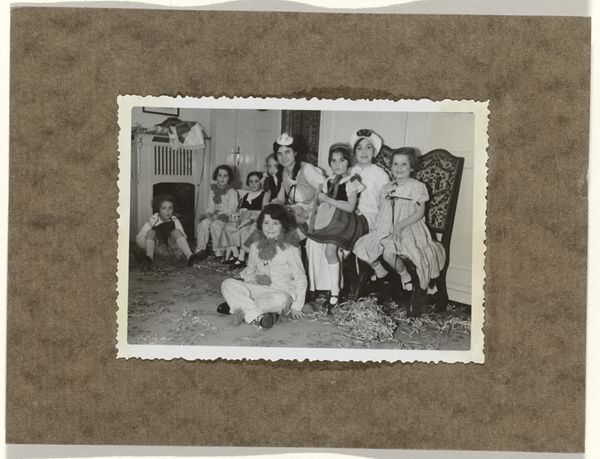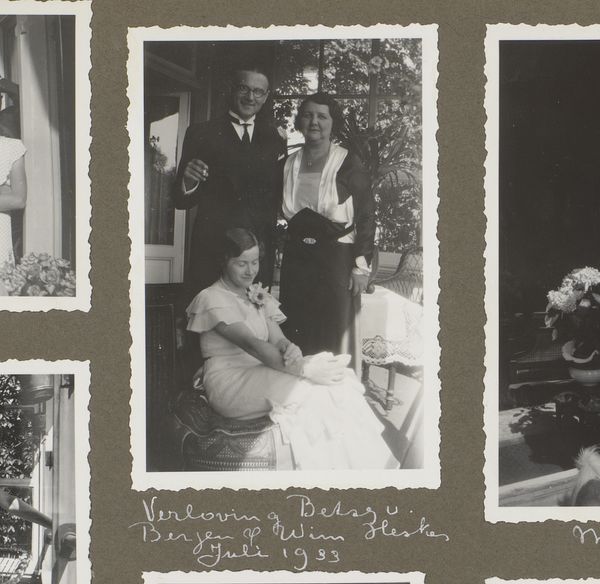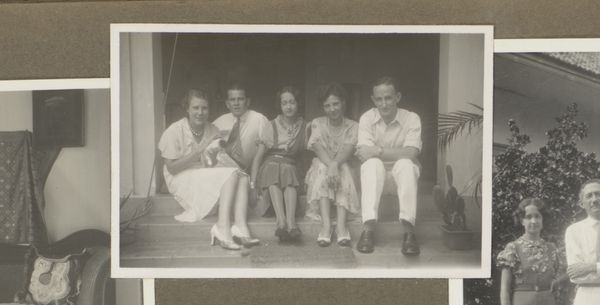
Groepsportret van de familie Van Bergen met Wilhelmina van Zijll de Jong en andere vrienden 1933 - 1937
0:00
0:00
print, photography, gelatin-silver-print
#
portrait
#
print photography
# print
#
photography
#
historical fashion
#
group-portraits
#
gelatin-silver-print
#
modernism
#
realism
Dimensions: height 69 mm, width 106 mm
Copyright: Rijks Museum: Open Domain
Editor: Here we have "Groepsportret van de familie Van Bergen met Wilhelmina van Zijll de Jong en andere vrienden," a photograph, specifically a gelatin-silver print, dating from around 1933 to 1937. It has such a formal, posed feel. What do you see when you look at this group portrait? Curator: This image speaks volumes about the social rituals of the time. Consider the careful arrangement of the figures, the clothing they've chosen. This isn't just a snapshot; it's a carefully constructed performance of social identity and family unity, meant for public consumption. It makes me wonder, where would an image like this be displayed or archived? How might its display reinforce the family's position within their social circle? Editor: That's a good point. You can see the wealth in the clothing. What would it mean for it to be “meant for public consumption?" Curator: Well, photography at this time, though increasingly accessible, still carried a certain weight. These images would circulate within the family, perhaps displayed in homes, or kept in albums – objects themselves that became carriers of memory and identity. How do you think a modern eye might interpret this compared to how someone in the 1930s would view it? Editor: I think we might look at it more critically, aware of the power dynamics inherent in such a carefully staged image. Curator: Precisely. We're attuned to the idea that photographs aren't objective representations of reality but are constructions designed to convey a particular message, particularly about social status. We need to consider how the photograph functioned within specific societal systems. Editor: It’s fascinating how a seemingly straightforward image can reveal so much about the culture of the time. It prompts you to consider how the act of portraying yourself, and its reception, is always very specific. Curator: Indeed. The act of photographing this group and the decision to memorialize it this way makes you appreciate the way photography participates in shaping and reinforcing power.
Comments
No comments
Be the first to comment and join the conversation on the ultimate creative platform.
